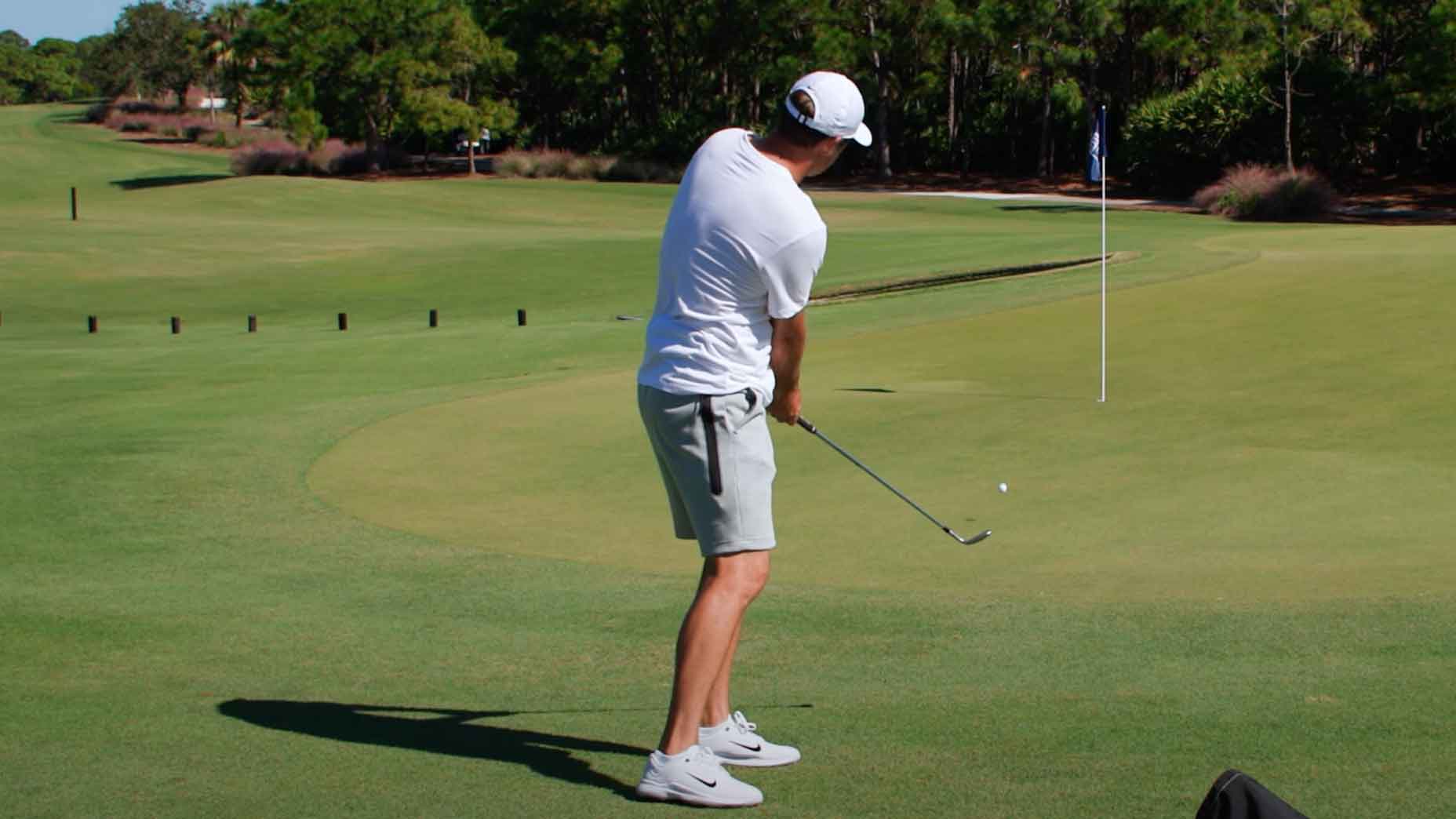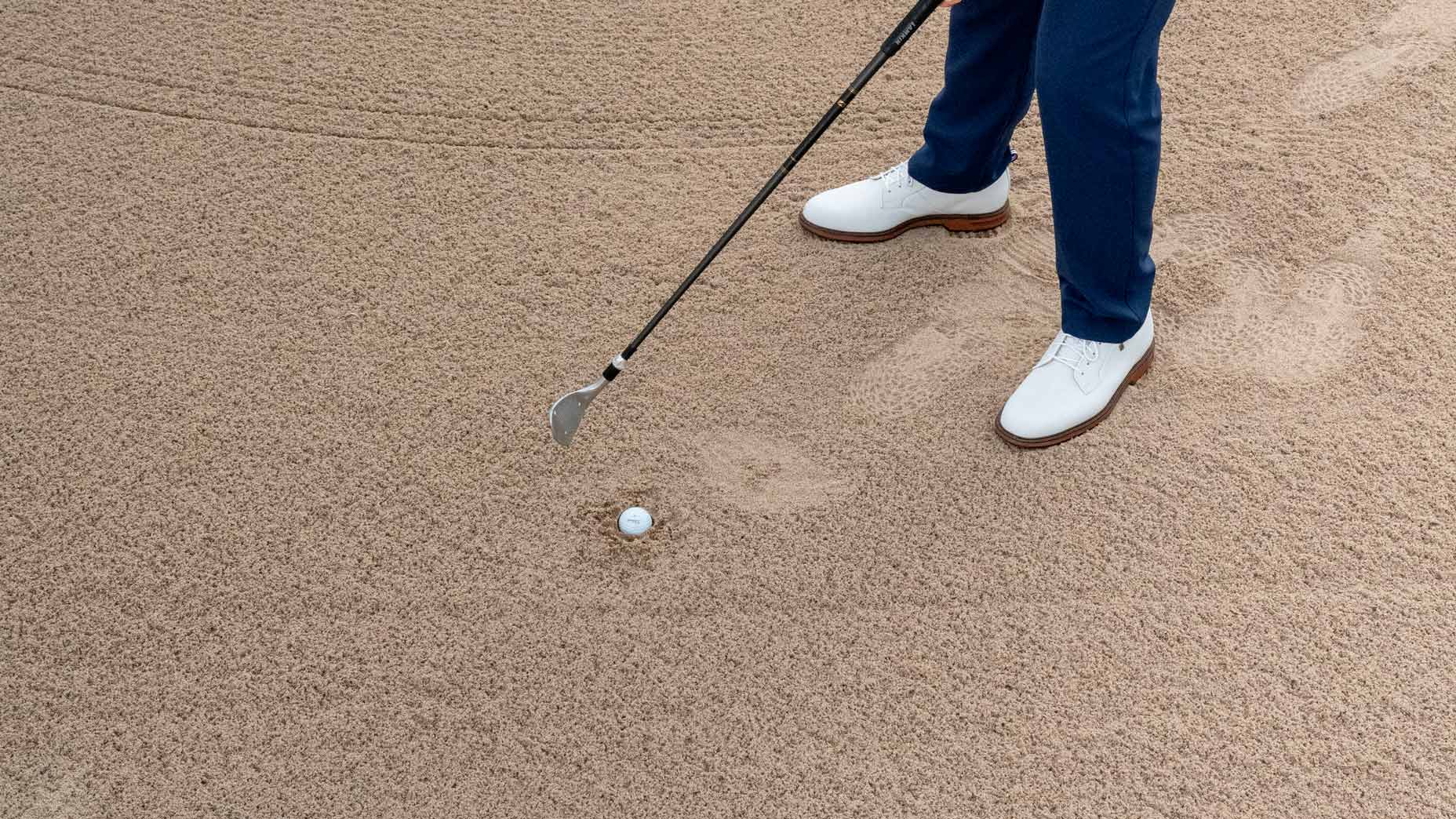5 reasons you keep chunking chip shots (and how to fix the issue)

Avoiding chunked chip shots goes a long way in lowering your scores.
Getty Images
Welcome to Shaving Strokes, a new GOLF.com series in which we’re sharing improvements, learnings and takeaways from amateur golfers just like you — including some of the speed bumps and challenges they faced along the way.
It’s probably not uncommon to experience something similar to the feeling described below during a round of golf:
You hit a fantastic drive that lands right in the middle of the fairway, then follow it up with an above average approach shot, leaving you with a short chip shot to get up and down from for par.
As you address your ball around the putting surface, though, you lose focus and get lazy in your mechanics, causing a chunked chip shot that either gets skulled across the green or goes just a few inches in front of you.
Frustrated by the mishit, you’re unable to compose yourself and end up with a double bogey (or worse), all because of one bad shot.
Obviously, this type of mistake needs to be avoided in order to shave strokes off your scorecard — and to enjoy the game more!
With the help of GOLF Top 100 Teacher Ed Oldham, you can avoid chunking chip shots and start to see the results you dream about. So take a look below to see five common reasons why you keep making this short game mistake, and Oldham’s tips on how to avoid making them ever again!
Do this to stop chunking chip shots
One of the most frustrating shots in golf is a chunked chip.
While it may be a common issue for many players, especially amateurs, they’re an easy fix — so long as you know the proper techniques.
So here are the five most common reasons why you may be chunking chip shots, and some solutions to help avoid repeating the problem.
1. The error: Gripping too strong
A grip that’s too strong will close the clubface, causing the leading edge of your wedge to dig into the ground.
On chip shots, you want to make sure you’re using the bounce to interact with the ground, which will result in a clean shot each time.
The fix: For shots around the green, try a weaker grip with your lead hand. A weaker grip exposes the bounce to the ground, and will help you to make better contact — producing improved results.
2. The error: Tilting back the upper body at setup
Having the upper body tilted away from the target can be good for your full swing, but really bad for your short game. This is because it moves the bottom of your swing arc too far back.
The fix: Set up with your shirt buttons in front of the ball. This helps to move your bottom point forward and helps you make solid contact.
3. The error: Backing up in the downswing
Another common error that I often see with amateur golfers is backing up in the downswing, which moves the bottom of the swing behind the ball.
The fix: Make some practice swings and work on getting the shadow of your head to actually move towards the target. Then simply stay on the target side during your downswing.
4. The error: Keeping your clubface closed in both the backswing and downswing
Just like the strong grip, keeping the clubface closed will present the leading edge to dig at impact. This will almost always produce a chunked chip shot — so you need to open up the face and use the bounce.
The fix: In your backswing, rotate the clubface so that the toe is pointed upwards. This simple fix will expose the bounce of the club, allowing it to interact with the ground rather than the leading edge; while also giving you more margin for error.
5. The error: You’re using an in-to-out swing path
Swing direction influences where you contact the ground. A path that is too in-to-out would contact the ground too early, while a path that is too out-to-in would contact the ground too late.
The most common path issue that I see is being too in-to-out, which results in hitting the ground behind the ball.
The fix: Put an alignment stick (available here) behind your ball, and point it at your target. Next, just simply practice making backswings with your wedge pointing at the alignment stick.
Divot Board
$99.99
View Product













